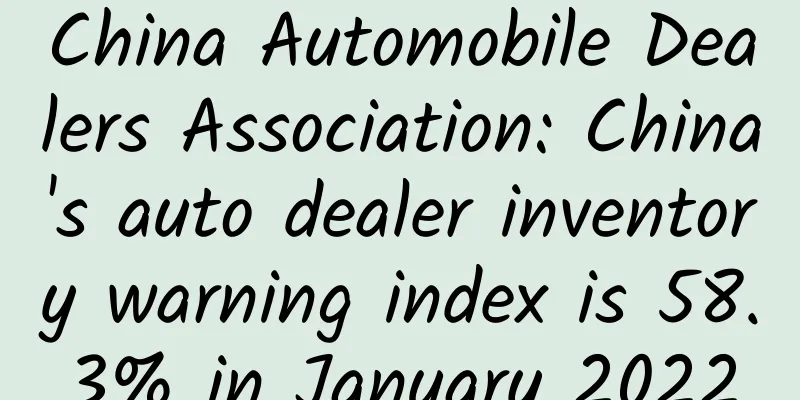With a loss of 40 million every day and 86 billion in 6 years, where did NIO, which has yet to make a profit, spend all its money?

|
Recently, there has been a sudden increase in debates about China's new energy vehicles. Overcapacity, cutting corners, and low-price competition have become new issues, and of course, there are also long-term losses. If you want to find a sample of domestic new energy manufacturers that has suffered long-term losses, NIO may be the most suitable. From its listing to now, in the past six years, NIO has accumulated losses of more than 86 billion yuan, with an average daily loss of nearly 40 million yuan. 40 million, what does this mean? When the competition between Didi and Kuaidi was the most intense, Tencent and Alibaba only spent so much in subsidies in one day, but Jack Ma and Pony Ma felt that it was too much. In order to reduce the cost of the fierce competition, the two sides completed the merger in just 22 days. NIO has persisted for 6 years despite the difficulties faced by two top Chinese Internet companies. Moreover, even with such huge losses, NIO can still maintain its leading position in the industry. We have to admire the financing and operation capabilities of Mr. Li Bin, who is second to none in the world. The question is, among so many new car-making players, why is it that only NIO’s script is filled with “huge losses”? There are two main reasons why a company suffers from long-term losses: low revenue and high costs. Weilai has both of these. The financial report shows that in 2023, NIO's cumulative sales reached 160,000 vehicles, a year-on-year increase of 37%; the total annual revenue was 55.62 billion yuan, a year-on-year increase of 12.9%. In a horizontal comparison, NIO's size is definitely not small in the Chinese new energy market. If the income is low and the expenditure is low, it may not necessarily lead to long-term losses. But NIO is different. It is a manufacturer that burns money to the point of digging deep into the ground, and has made large-scale investments in almost every direction of the new energy vehicle industry. First of all, in terms of R&D investment, from 2020 to now, NIO's R&D expenses have quadrupled year-on-year. NIO's R&D is full-stack R&D, and NIO is personally involved in smart cockpits, smart driving, power platforms, solid-state batteries, etc. It is even developing its own brand of mobile phones and car chips. These are projects that require a lot of money but will not produce results in the short term. Secondly, Weilai’s marketing expenses are also quite astonishing, almost on par with its R&D expenses, both reaching the tens of billions level. Although some car companies don’t want to admit it, most of the new car-making forces in China regard marketing as their core competitiveness. If you have a new car, you have to spend money to get on the trending search; if there is negative news, you also have to spend money to remove the trending search; the back and forth trending searches all cost a lot of money. In addition, NIO has two money-burning projects that other manufacturers do not have yet: 1. NIO has always adhered to the battery swap model and built a large battery swap network across the country. The construction cost of a single battery swap station in the early days was about 3 million yuan. After several years of upgrades, the current cost has dropped to about 1.5 million yuan. As of June 1 this year, NIO has built a total of 2,428 battery swap stations across the country. In addition to the basic construction costs, these battery swap stations also require a large amount of operating and maintenance costs each year, which is also an astronomical figure. 2. Most of NIO's stores are located in prosperous areas of various cities. In order to maintain a high-end image, no expense is spared in store construction. A large number of them are specially set up inside large supermarkets, with an area of hundreds of square meters. The decoration cost of each store is staggering, not to mention rent and labor costs. As a new force in the automotive industry, it is inevitable that new forces manufacturers will have high initial costs. So far, only Ideal and Wenjie have achieved profitability among the new forces in the automotive industry. Weilai's money-burning projects are understandable from the perspective of the ecological chain. After all, before the Shanghai Super Factory went into production, Tesla was also a big loss-maker. NIO has been losing money for more than six years now, and there is no sign of stopping the bleeding. In other words, NIO is currently unable to effectively spread costs and lacks the ability to circulate and generate revenue. What is the future of NIO? Let's analyze it from the perspective of its product SKU. In May this year, NIO's sales exceeded 20,000 units, and none of its eight models on sale sold more than 10,000 units. The best-performing ES6 sold 8,094 units, while the ET5T sold only 4,785 units. The monthly sales of the remaining models were all below 3,000 units. Small sales volume and no hit models are the reasons why NIO's R&D results cannot be quickly popularized and costs cannot be diluted. This is also the fundamental logic behind its continuous R&D and losses. Think about it, apart from the battery swap model, is there anything else that NIO can remember? If NIO could come up with a technology that its competitors cannot replicate in the short term and quickly implement it into sales, costs would quickly come down. Unfortunately, it has not yet demonstrated this ability. Judging from the current situation, it is unlikely that NIO will cut its spending on R&D, marketing, battery swap stations, etc. on a large scale. The company has spread itself too thin, and if it stops rashly, the sunk costs alone will become an unbearable burden for NIO. In this case, how to expand sales in the short term and reduce costs by scale has become the key to NIO's breakthrough. NIO's second brand Ledao, which was announced some time ago, may be able to take on such a task. The starting price of Ledao's first model, Ledao L60, is only about 200,000 yuan. The relatively low price makes it easier for NIO to quickly expand its sales. The only question is, will the market, which has become white-hot, leave enough room for NIO to accommodate Ledao? If Ledao cannot shoulder the heavy responsibility of stopping the bleeding and making profits, what kind of future will NIO, which has suffered astronomical losses, face? As a winner of Toutiao's Qingyun Plan and Baijiahao's Bai+ Plan, the 2019 Baidu Digital Author of the Year, the Baijiahao's Most Popular Author in the Technology Field, the 2019 Sogou Technology and Culture Author, and the 2021 Baijiahao Quarterly Influential Creator, he has won many awards, including the 2013 Sohu Best Industry Media Person, the 2015 China New Media Entrepreneurship Competition Beijing Third Place, the 2015 Guangmang Experience Award, the 2015 China New Media Entrepreneurship Competition Finals Third Place, and the 2018 Baidu Dynamic Annual Powerful Celebrity. |
<<: Poposki: My experience after testing the HGST 7K6000 6T hard drive
Recommend
Lumia1020 try to play the voice of the girl
Microsoft released the new Windows Phone 8.1 opera...
What is the Internet and how does it work?
A huge network formed by connecting networks with...
This is a "big event" that has been planned since the 80s...
A drop of water can reveal the vast ocean. Only b...
Content Marketing Trends in 2017 (Part 2)
Preface: The 2017 Content Marketing Trends (Part ...
Online traffic generation skills for training institutions!
Education is the foundation of a country. Parents...
Business Intelligence Software Development Trends in 2020
Despite having become mainstream over the past fe...
Make friends with e-commerce academy · Get started with live streaming with zero basics, and learn how to become a live streaming anchor
Make friends with e-commerce academy. Get started...
Using an ancient seed from 1,000 years ago to cultivate a "mysterious tree"?
Author: Huang Yanhong Duan Yuechu According to a ...
Behind the Cola Wars: Yuanqi Forest has reached a crossroads
During the May Day holiday this year, I, who had ...
Can changing your diet really lower your blood pressure? Here’s how to eat to protect your heart
Recently there was a very eye-catching scientific...
What happens when iPhone 7 encounters the world's strongest acid?
Every time a new generation of iPhone comes out, ...
Two of my most memorable moments as a programmer
[[235144]] Last week, my colleagues and I had a q...
Jack Ma, Lei Jun, Zhou Hongyi and other bigwigs followed suit and starred in TV series
[[147756]] Recently, the e-commerce startup comed...
What superpowers do growth hackers need?
I've recently been reading Fan Bing's &qu...
Sony Z2 beats HTC M8
In a foreign media test earlier, HTC M8 beat Sony&...









